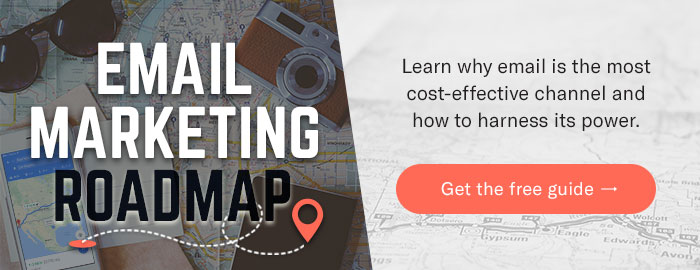 We know a lot about small business email marketing. From the trade show floor to sales calls, and support questions, we’ve been exposed to just about every type of email marketing questions out there. While the questions are unique, they share a common thread: there’s a lot to email marketing that small business owners don’t fully understand.
We know a lot about small business email marketing. From the trade show floor to sales calls, and support questions, we’ve been exposed to just about every type of email marketing questions out there. While the questions are unique, they share a common thread: there’s a lot to email marketing that small business owners don’t fully understand.
Don’t take this the wrong way either. Most small business owners didn’t start out as marketers, let alone email marketing experts, so a lot of them are learning as they go along. However, the energy it takes to learn how to do good email marketing compared to the amount of time it will take to start seeing results is a lot greater separation than people might realize.
With this being the case, the noble efforts of small business owners to use email as part of their marketing are falling short without knowing. From all of the questions we have fielded in the past year, I’ve parsed down the core concepts that really illustrate that you might not truly understand small business email marketing.
The 5 Warning Signs
#1: You only talk about yourself or business.
This is email marketing 101. Think about an annoying friend you might have that is very self-centered. You know this person only cares about what’s new in their life, what’s they like and don’t like, and they never take an interest in someone else. Annoying, right? Now take that same mentality and apply it to your email marketing. You’d be surprised how many people think that repetitive emails to their past and current customers about, well, the business, simply get ignored, brushed off, and deleted over time.
Rather than bombard your email list with these self-centered email types, start writing emails for your customers about things they care about. Help, not sell. The key to better email marketing is having great content.
#2: You don’t know how well your emails perform.
A lot of people who are doing email for their business fall into two schools of thought here. The first school is the group of people that believe that once they send an email, they’ll immediately get business. Now if you’re a retailer, it’s a different story, of course, but for businesses that have longer sales cycles before customers return, those expectations are misplaced.
The other school of thought here is that email performance is either unknown or not understood at all. To put this simply, you can’t measure what you’re not actively monitoring. If you’re in this camp, it’s very easy to become frustrated. Believe me, I know firsthand just how much work goes into crafting an email for clients. To not know how well my efforts are being received can be very frustrating. And even if tracking information is available, understanding what it all means can be such a headache!
#3: You send emails way too often (or not enough).
Frequency is important with email marketing and it changes depending on what industry you’re in. For example, if you’re an online retailer, an email every other day might be overkill, but not uncommon. However, for industries like mortgage, real estate, insurance, and promotional products distribution, these industries have much more time in between send times. I’ve maintained for a while that do-it-yourself projects like email marketing are just not the right approach, if you don’t have any experience with it. Sending email too often can annoy and alienate your audience. Sending emails not nearly enough doesn’t keep you top of mind with your customers.
#4: Your emails look like bad websites from the 90’s.
On top of having to know how to send emails and writing great content for those emails, there’s an element of graphic design that you probably don’t have. The best example of this is that if you wanted to go build a house, everything you’d need could be found at Home Depot. But the best use of your time, money, and the eventual delivered product will be vastly more appealing with professional help. So while you might have MailChimp or Constant Contact for your business, can you honestly say you’re pleased with the visual outcome? And if you are, here’s the test. How well are those emails converting for you? Good email marketing converts into sales.
#5: You don’t believe in the power of email marketing.
If you don’t truly believe that there is value to be had by using email marketing for your business, then this might be the biggest indicator that you just don’t understand it. Aside from the simple up front value points of staying top-of-mind with customers, building stronger relationships over time, and extending your reach beyond the inbox there is a ton of data to back everything up. Email marketing directly impacts your bottom line and that’s the truth.
Whether you’ve been struggling with getting results from your email marketing efforts or have no clue where to start, take comfort in knowing this: you’re a professional who has a deep skillset and knowledge about your business, not email marketing. Take these 5 warning signs with a grain of salt too. With time and practice, you’ll be able to do your own emails for your business. But time is money, and sometimes it’s just easier to let a professional marketer do the work for you.



![Better Email Etiquette Equals Better Marketing Results [16 Rules]](https://www.outboundengine.com/wp-content/uploads/shutterstock_411184843-1-400x250.jpg)

